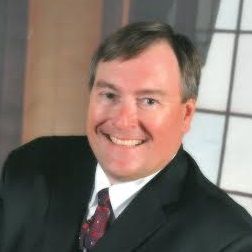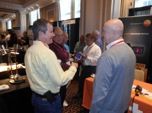- Home
- About
- Courses
- IR/INFO CONFERENCE
- Software
- EXPERT SERVICES
- STANDARDS
- Proposal Templates
- Electrical Systems & Rotating Equipment
- Building Envelopes
- Insulated Roofs
- Photovoltaic Systems
- Pest Detection
- Yachts and Small Craft
- Thermal Imaging of Horses
- Optical Gas Imaging
- Measuring Reflected Temperature
- Measuring Emittance
- Measuring Transmittance
- Distance/Target Size Ratios
- Complete Series
- Resources
- BUSINESS OPPORTUNITIES
- STORE

Director’s Message

Although lacking retinas, thermal imagers may be adversely affected when pointed at high temperature objects for prolonged periods of time. It is often interesting to use a thermal imager to view ordinary objects but imaging the Sun, arc welders and similarly hot objects should be avoided unless your imager has been built specifically for such applications. The reason for this is that the sensitive thermal detector that comprises the heart of any thermal imaging system can be destroyed by imaging very hot objects, even for brief periods of time.
Perhaps a sage corollary could be derived from Bruce Springsteen’s epic song, Blinded by the Light:
… Mama always told not to image into the sights of the Sun…
A ruined detector assembly is NOT where the fun is.
School’s Open – Drive Carefully

By early September, over 55 million children across the United States will head back to school. With 13 percent of those children typically walking or biking to their classes, drivers should be especially vigilant for pedestrians before and after school hours. The afternoon hours are particularly dangerous – over the last decade, nearly one in four child pedestrian fatalities occurred between 3 p.m. and 7 p.m.
Launched in 1946, the American Automobile Association’s School’s Open – Drive Carefully awareness campaign was created as a way to help reduce child pedestrian fatalities and injuries. Here are several recommendations from AAA regarding ways drivers can help to keep kids safe:
- Slow down – Speed limits in school zones are reduced for a reason. A pedestrian struck by a vehicle traveling at 25 mph is nearly two-thirds less likely to be killed compared to a pedestrian struck by a vehicle traveling just 10 mph faster.
- Come to a complete stop – Research shows that more than one-third of drivers roll through stop signs in school zones or neighborhoods. Always come to a complete stop, checking carefully for children on sidewalks and in crosswalks before proceeding.
- Eliminate distractions – Research shows that taking your eyes off the road for just two seconds doubles your chances of crashing. Children can be quick, crossing the road unexpectedly or emerging suddenly between two parked cars. Reduce risk by not using your cell phone or eating while driving.
- Watch for bicycles – Children on bikes are often inexperienced, unsteady, and unpredictable. Slow down and allow at least three feet of passing distance between your vehicle and a bicyclist.
Lastly, always maintain a safe distance from a stopped school bus. Be on the lookout for children boarding or exiting school buses.
Preparing Roofs for Winter


With many parts of the world experiencing mild weather, it is hard to think about winter. For many, autumn provides a perfect opportunity to conduct infrared inspections of flat roofs to help ensure that they are ready for the upcoming colder months.
Summer can be especially tough on roofing systems. High temperatures, building movement, and UV radiation often cause cracks and splits in the waterproofing system. Left undetected, these cracks and splits can lead to roof leaks and premature roof failure. Performing an infrared roof inspection prior to the onset of colder weather can detect evidence of problems and help to direct repair efforts.
Performed under the proper conditions with the right equipment, an infrared inspection can detect evidence of latent moisture within the roofing system often before leaks become evident in the building. For many locations, autumn provides perfect conditions for conducting an infrared inspection and performing any necessary roof repairs.
The best candidates for infrared inspection are flat or low slope roofs where the insulation is located between the roof deck and the membrane and is in direct contact with the underside of the membrane. Applicable constructions are roofs with either smooth or gravel-surfaced, built-up or single-ply membranes. If gravel is present, it should be less than ½” in diameter and less than 1″ thick.
For smooth-surfaced roofs, a short wave (2-5.6 µ) imager will provide more accurate results especially if the roof is painted with a reflective coating. All infrared data should be verified by a qualified roofing professional via core sampling or invasive moisture meter readings.
Early Registration Bonus for IR/INFO Exhibitors

Now in its 29th year, IR/INFO is the original Advanced Infrared Training Conference, Technical Symposium, and Technology Expo. IR/INFO features four days of networking, learning, and fun in a professional, yet relaxed, family atmosphere. IR/INFO is scheduled for January 21 – 24, 2018 in New Orleans, LA.
IR/INFO is a must attend event for all manufacturers and distributors of infrared equipment, condition based monitoring tools and services, reporting software, and those who provide products or services of interest to thermographers.

Professional Curriculum
Infraspection Institute instructors use extraordinary techniques to deliver stimulating, effective, and relevant instruction. All of our instructors are highly experienced, practicing thermographers. Each brings years of unmatched, real-world experience to the classroom. Our courses are taught using a combination of dynamic multi-media presentations, hands-on demonstrations and one-on-one interaction with students. Our courses integrate theory, practice, and case studies in a fun, relaxed atmosphere designed to maximize your learning experience.

